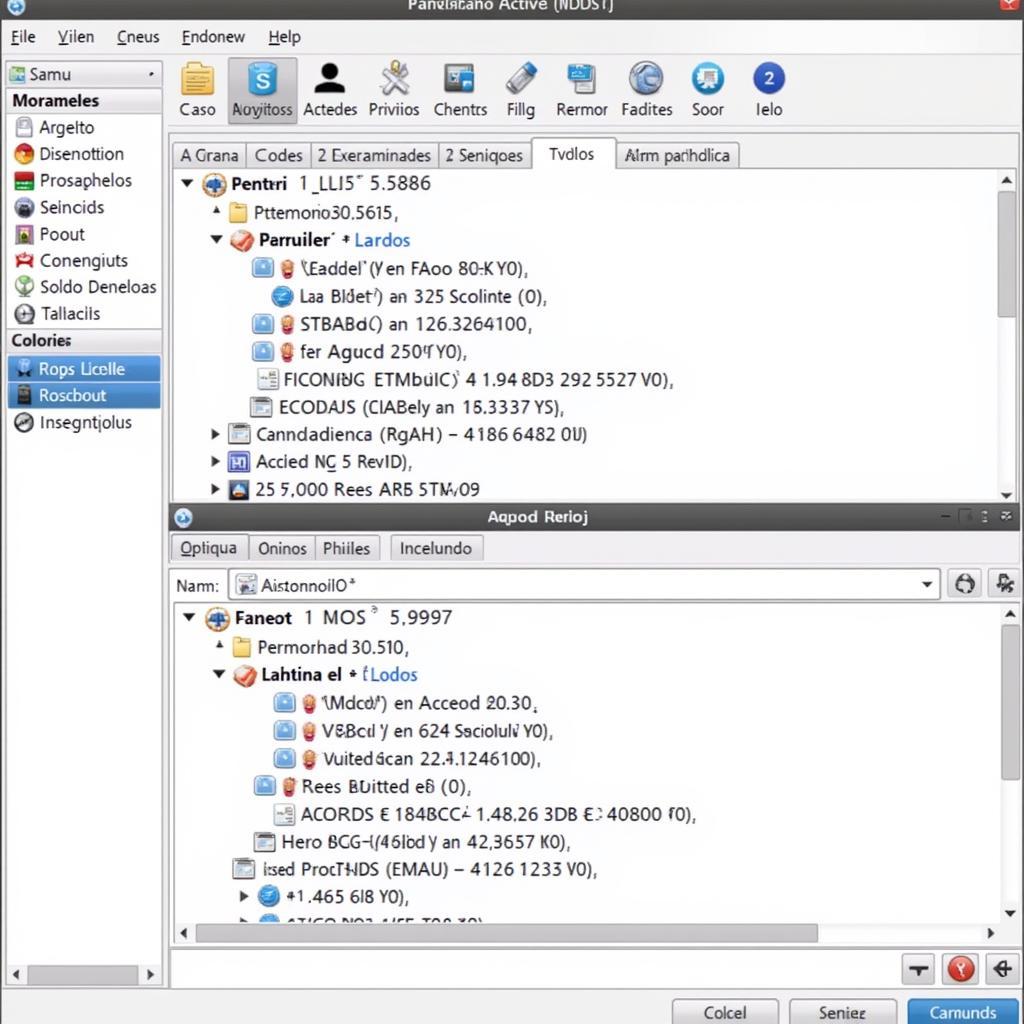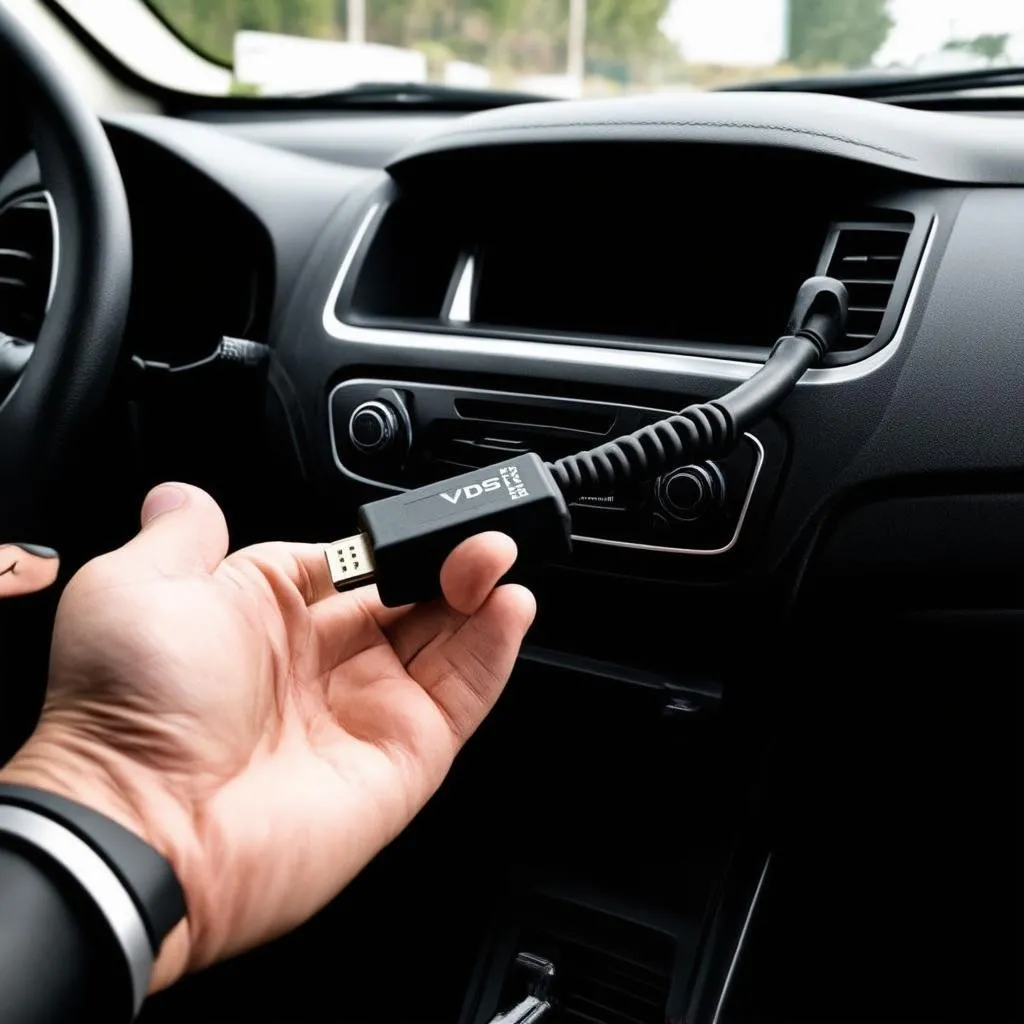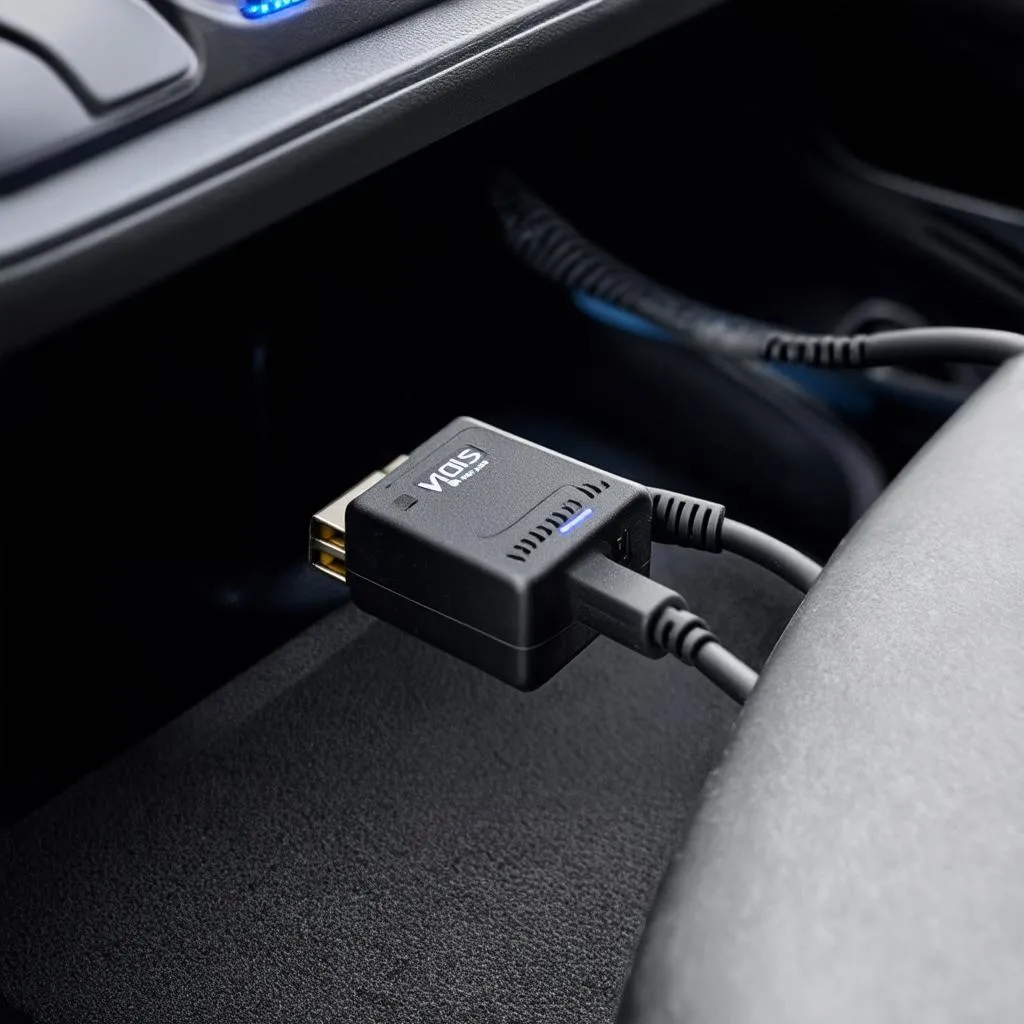VCDS Español, the Spanish version of the renowned VAG-COM diagnostic system, is an essential tool for anyone working on Volkswagen, Audi, Seat, and Skoda vehicles. Whether you’re a seasoned mechanic, a DIY enthusiast, or a shop owner, understanding how to effectively use VCDS in Spanish can unlock a wealth of information about your vehicle’s health, performance, and potential issues.
Understanding the Power of VCDS Español
VCDS Español offers a comprehensive suite of diagnostic and programming capabilities, allowing you to delve deep into your vehicle’s systems. From reading and clearing fault codes to performing adaptations and coding, VCDS Español empowers you to take control of your car’s maintenance and repairs. This powerful software provides detailed insights, enabling accurate diagnoses and targeted solutions. Think of it as having a direct line of communication with your car’s brain, allowing you to understand its language and address its needs.
Navigating the Interface in Spanish
While the functionality of VCDS remains consistent across languages, navigating the interface in Spanish opens up the platform to a wider audience. For Spanish speakers, this removes the language barrier and allows for more intuitive use. Menu options, fault code descriptions, and measurement blocks are all presented in Spanish, making the diagnostic process smoother and more accessible.
 VCDS Spanish Interface Screenshot
VCDS Spanish Interface Screenshot
Common Uses of VCDS Español
VCDS Español is incredibly versatile, catering to a wide range of diagnostic and programming tasks. Here are some common applications:
- Reading and Clearing Fault Codes: Easily identify and clear diagnostic trouble codes (DTCs) to pinpoint the root cause of vehicle malfunctions.
- Performing Output Tests: Activate individual components, such as lights, motors, and relays, to verify their proper operation.
- Adapting Control Modules: Adjust control module settings to customize vehicle behavior and address specific issues.
- Coding Control Modules: Access advanced coding functions to enable or disable specific features and functionalities.
- Monitoring Live Data: View real-time data streams from various sensors and systems to gain insights into vehicle performance.
Why Choose VCDS Español over Generic OBD-II Scanners?
While generic OBD-II scanners provide basic diagnostic capabilities, VCDS Español offers a much deeper level of access and control. Unlike generic scanners that only read generic fault codes, VCDS Español provides access to manufacturer-specific codes and data, providing more precise diagnostics. This is crucial for resolving complex issues that generic scanners might miss.
Tips for Effective VCDS Español Usage
To maximize the benefits of VCDS Español, consider these tips:
- Invest in a Genuine Cable: Counterfeit cables can lead to unreliable results and potential damage to your vehicle’s systems.
- Keep Your Software Updated: Regular updates ensure compatibility with the latest vehicle models and diagnostic protocols.
- Consult Reliable Resources: Numerous online forums and communities offer valuable information and support for VCDS users.
- Practice on a Test Vehicle: If you’re new to VCDS, practice on a test vehicle before working on your primary car.
“Having access to VCDS in Spanish is a game-changer for our workshop,” says Miguel Hernandez, a certified automotive technician in Madrid. “It allows us to efficiently diagnose and repair a wide range of VAG vehicles, ultimately saving our customers time and money.”
Troubleshooting Common VCDS Español Issues
Occasionally, you might encounter issues while using VCDS Español. Here are some troubleshooting tips:
- Cable Connection Problems: Ensure the cable is securely connected to both the vehicle’s OBD-II port and your computer.
- Software Compatibility Issues: Check for software updates and ensure compatibility with your vehicle’s model year.
- Incorrect Coding: Double-check coding procedures and consult reliable resources for correct coding values.
“The ability to accurately diagnose and resolve complex issues with VCDS Español has significantly improved our diagnostic capabilities,” adds Maria Sanchez, owner of a specialized VAG repair shop in Barcelona. “It’s an indispensable tool for any serious VAG technician.”
Conclusion
VCDS Español is a powerful diagnostic tool that empowers Spanish-speaking users to effectively diagnose, repair, and maintain VAG vehicles. Its comprehensive functionalities and user-friendly Spanish interface make it an invaluable asset for both professionals and DIY enthusiasts alike. Mastering VCDS Español will undoubtedly enhance your understanding of your vehicle and enable you to address its needs with precision and confidence. By leveraging its capabilities, you can save time, money, and frustration in the long run.
FAQ
- Is VCDS Español compatible with all VAG vehicles? VCDS Español is compatible with most Volkswagen, Audi, Seat, and Skoda vehicles.
- Do I need any special skills to use VCDS Español? Basic automotive knowledge is recommended, but numerous resources are available to help you learn.
- Where can I purchase a genuine VCDS cable? Genuine VCDS cables can be purchased from authorized distributors.
- How often should I update my VCDS software? It’s recommended to update your software regularly to ensure compatibility with the latest vehicles and features.
- Can I use VCDS Español on multiple vehicles? Yes, VCDS Español can be used on multiple VAG vehicles.
- Is there a mobile version of VCDS Español? No, VCDS Español is primarily a desktop application.
- What should I do if I encounter an error message? Consult the VCDS documentation or online forums for troubleshooting assistance.
Need further assistance?
Contact us via WhatsApp: +1 (641) 206-8880, Email: CARDIAGTECH[email protected] or visit us at 276 Reock St, City of Orange, NJ 07050, United States. We offer 24/7 customer support. We also have a variety of articles on our website, CARDIAGTECH, covering various automotive diagnostic topics. Check out our resources on [link to relevant article 1] and [link to relevant article 2] for more in-depth information.


